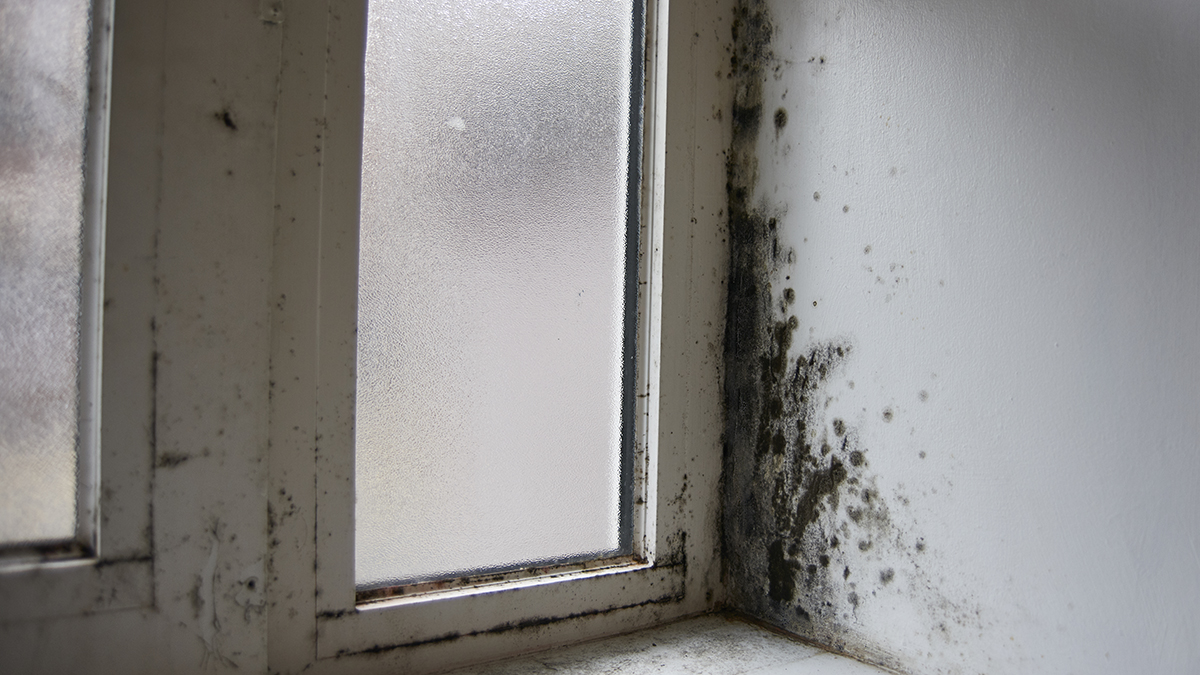Damp and mould have had a lot of media attention. But this isn’t a new problem.
Tenants have told us for years about damp, mouldy properties leading to health issues, damaged belongings, unhelpful landlords and disinterested councils.
Here are our answers to the most common questions about damp and mould.
Is condensation bad for my health?
If condensation builds up, mould starts to grow and this can have serious health consequences.
Babies, young children, older people and those with allergies or a compromised immune system are most at risk.
Excessive mould growth is likely to make the property unfit to live in. Your landlord is responsible for dealing with the problem.
Is condensation caused by ‘lifestyle’?
Landlords are often quick to dismiss condensation, saying it is caused by a tenant’s lifestyle. This happens in both private and social housing.
Normal day-to-day activities like cooking, showering and even breathing can add to condensation in your home. But this doesn’t mean you are to blame. There could be an underlying problem that the landlord needs to fix.
Condensation can also be a sign of excess cold, a serious health and safety hazard.
What should my landlord do?
Your landlord should come and look for the cause when you report damp or mould.
Condensation and damp are often caused by things like hidden leaks, broken heating systems, faulty drainage, missing roof tiles or poor insulation.
Landlords must fix these problems.
Your home must be fit to live in from when your tenancy starts until you move out.
My belongings have been damaged and there is a bad smell in the property. My landlord insists it’s condensation. Could it be something worse?
Condensation is not the only cause of mould. Rising and penetrating damp are also problems. Tide marks on the ground floor walls are a tell-tale sign of rising damp. Other signs include crumbling plaster, rotten skirting boards and a musty smell in the property.
Rising damp is often caused by a failed damp-proof course or faulty drainage – something your landlord likely has to fix.
Penetrating damp can lead to mould growth anywhere on the walls and ceilings. Damp patches inside the property tend to become wetter and darker when it’s raining.
Faulty downpipes, cracks in mortar or brickwork and missing roof tiles often cause penetrating damp.
Tell your landlord about damp and mould. Take pictures. Your landlord should investigate. You can complain to your council if they do not.
My landlord says damp and mould are my fault – is this right?
Some landlords are quick to blame their tenants for damp and mould instead of investigating it. This is not right.
The property is your home and you can use it for all normal day-to-day activities.
As a tenant, you should not damage the property and you should report problems to your landlord.
If there’s bad damp and mould, your landlord should look into it. A ventilation system or better insulation may be needed.
What if my landlord won’t take action?
If you rent privately, you can complain to the council’s environmental health team.
If the council takes enforcement action against your landlord, you could be protected from revenge eviction. That’s when a landlord tries to evict you for asking them to fix a problem.
If you rent from a council or housing association, complain to them. If this does not work, you can take your complaint to the Housing Ombudsman.
The Ombudsman takes damp and mould complaints very seriously and has recently published a report on damp and mould.
It could also be a good idea to speak to your local councillor or MP.
I’m fed up and I want to stop paying rent. Could I be evicted?
In short, yes. Tenants do not have the right to withhold rent even if the property is in severe disrepair or unfit to live in.
If you rent privately, your landlord could give you a section 21 notice and a court cannot usually stop this type of eviction.
If your landlord tries to evict you for rent arrears, you could ask the court to take account of your bad living conditions. But it would be up to the court to decide, and you’d probably need legal help.
A council officer visited my home and said the property is dangerous to live in. I have nowhere to go.
If the council tells you that the property is unfit to live in, then the same council will have to help you with housing. The help depends on your personal situation but, at the very least, the council should help you find somewhere suitable.
Can I get compensation for my health problems and damaged belongings?
You could take court action for personal injury up to three years after the incident. That does not necessarily mean three years after moving out. Get legal advice first. Court action can be expensive, so look into things first.
I live in social housing. I moved out for repairs, but the property is still full of mould. Can they make me move back in?
The landlord should not tell you to move back if your home is unfit. Take photos and ask friends and family to witness the conditions. Then complain to the landlord. If this doesn’t work, ask the Ombudsman to step in.
If the living conditions put your or your family’s health at risk, you could count as homeless and the local council could have a legal duty to help.

